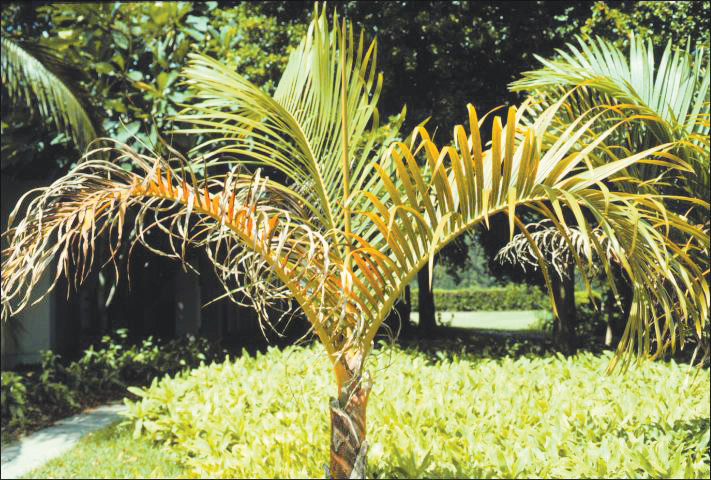Potassium for Your Palms?
GREEN COVE SPRINGS – With their unique form and texture, palm trees are a staple of many Florida landscapes. However, many people do not realize that palms are heavy feeders and deficiencies are …
This item is available in full to subscribers.
Attention subscribers
To continue reading, you will need to either log in to your subscriber account, or purchase a new subscription.
If you are a current print subscriber, you can set up a free website account and connect your subscription to it by clicking here.
If you are a digital subscriber with an active, online-only subscription then you already have an account here. Just reset your password if you've not yet logged in to your account on this new site.
Otherwise, click here to view your options for subscribing.
Please log in to continueDon't have an ID?Print subscribersIf you're a print subscriber, but do not yet have an online account, click here to create one. Non-subscribersClick here to see your options for subscribing. Single day passYou also have the option of purchasing 24 hours of access, for $1.00. Click here to purchase a single day pass. |
Potassium for Your Palms?
GREEN COVE SPRINGS – With their unique form and texture, palm trees are a staple of many Florida landscapes. However, many people do not realize that palms are heavy feeders and deficiencies are often very noticeable and unattractive.
This becomes an even bigger issue when you realize how poorly our soil holds nutrients and the rainy weather washes nutrients away from plant roots.
As you drive around the county, take note on how many palms you see with yellowing or browning leaves – this is usually a sign of nutrient issues.
With nutrients, plants require 16 essential elements for growth but each variety often requires a different mix. Add into the fact that there are interactions between some nutrients that can cause them to become unavailable to the plant, you will see that many fertilizers for many different purposes have been developed.
With palms, the University of Florida’s research points to a granular fertilizer that has an analysis of 8-2-12-4 milligrams, meaning it is 8 percent Nitrogen, 2 percent Phosphorous, 12 percent Potassium, and 4 percent Magnesium. If possible, also look for a fertilizer that also contains about 2 percent Manganese, 0.1-0.2 percent Chelated Iron, 0.15 percent Boron, Copper, and Zinc but any 8-2-12-4 milligrams is acceptable. Also apply products that contain 100 percent slow release Nitrogen, Potassium and Magnesium, allowing those nutrients to break down slowly and be available to the plant for a longer period of time.
Overall, a recommended application is 1.5 pounds of 8-2-12-4 milligrams every three months, with your first application in April and your last application in September. Smaller amounts of product may be sufficient for the trees but never apply more product or more frequently, as you will be wasting your money and extra nutrients will end up in our groundwater or waterways, which can lead to an algal bloom. When applying, spread the product evenly under the tree’s canopy to ensure even uptake. Avoid fertilizer spikes or liquid fertilizer products.
One way to see if your palms are in need, look for deficiency symptoms. These can be seen as yellowing of the frond, death of leaf tips, or leaf spotting and can appear differently depending on the species and which nutrient is deficient. If you need help identifying the issue, contact your county UF/IFAS Extension office or check the UF/IFAS Fact sheet at http://edis.ifas.ufl.edu/ep273. Note that if a plant is severely deficient, it may take several applications or years to fully recover. It is also worth it to check for disease and insects if you see yellowing or frond necrosis as their symptoms may look somewhat similar to that of nutrient deficiency.
If you have any questions contact the University of Florida/IFAS Clay County Extension Office at (904) 284-6355 or email them to IF-SVC-Clay-MG@ad.ufl.edu.








